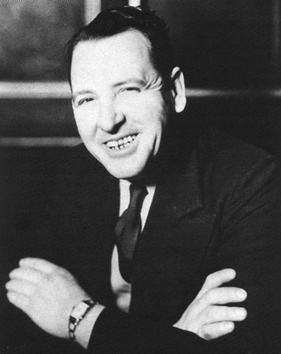Milton Brown facts for kids
Quick facts for kids
Milton Brown
|
|
|---|---|
 |
|
| Background information | |
| Birth name | Milton Brown |
| Also known as | "Father of Western Swing" |
| Born | September 8, 1903 |
| Origin | Stephenville, Texas, US |
| Died | April 18, 1936 (aged 32) Fort Worth, Texas, US |
| Genres | Western swing |
| Instruments | Vocals |
| Years active | 1930–1936 |
| Labels | Victor, Bluebird, Decca |
Milton Brown (born September 8, 1903 – died April 18, 1936) was an American band leader and singer. He helped create a new type of music called Western swing. His band was the first to mix different styles like country, jazz, and pop music. This unique blend earned him the nickname "Father of Western Swing."
Milton Brown's lively music style, often called "hot-jazz hillbilly," became popular in Fort Worth, Texas. He performed there from 1931 to 1936. He worked with Bob Wills early in his career. Together, they shaped the sound of Western swing in the 1930s. For a time, Brown's band, the Musical Brownies, was even more popular than Bob Wills's band. Sadly, Brown's career ended too soon when he died after a car accident in 1936.
Contents
Milton Brown's Life Story
Early Days and Music Beginnings
Milton Brown was born in Stephenville, Texas, in 1903. He moved to Fort Worth, Texas, in 1918. After finishing high school in 1925, he worked selling cigars. But he lost his job during the Great Depression in the late 1920s.
Brown started his music journey in 1930. He met Bob Wills and guitarist Herman Arnspiger. They were playing at a dance in Fort Worth. Brown joined them to sing "St. Louis Blues." The three decided to play music together. They performed at medicine shows around Texas. Brown also got them a radio show on WBAP. They played for Aladdin Lamp Company and called themselves the Aladdin Laddies.
Joining the Light Crust Doughboys
In early 1931, a company called Light Crust Flour hired the group. This company was run by Burrus Mill and Elevator Company. They wanted the band to play daily on the radio station KFJZ. The company manager, W. Lee O'Daniel, hosted the radio shows. He had the group change their name to the Light Crust Doughboys.
The Doughboys became very popular quickly. Soon, O'Daniel moved their show to another radio station. Then, the program was broadcast all over the state. The Doughboys played many kinds of songs. They performed cowboy songs, jazz, blues, and popular tunes. This wide variety of music helped their audience grow.
In February 1932, they recorded a song for Victor Records. They used the name the Fort Worth Doughboys. The band loved playing dance music and wanted to perform at dances. However, O'Daniel did not want them to play outside of their radio shows. He also did not pay them much money. This made Brown upset. In September 1932, Brown left the band after an argument about money. He needed more money to help his parents.
Forming the Musical Brownies
After leaving the Light Crust Doughboys, Milton Brown started his own band. He formed the world's first Western swing band in Fort Worth, Texas. He called them the Musical Brownies. The first members included Brown, guitarist Derwood Brown, bassist Wanna Coffman, Ocie Stockard on tenor banjo, and fiddle player Jesse Ashlock. Soon after, pianist Fred "Papa" Calhoun and fiddle player Cecil Brower joined the group. Brower replaced Ashlock.
Like the Light Crust Doughboys, the Musical Brownies played a mix of country, pop, and jazz. But the Brownies had a stronger rhythm and blues dance style. Almost right away, Brown and His Musical Brownies became a huge hit. They had a regular spot on the radio station KTAT. They also drew large crowds to dance halls in Texas and Oklahoma. Their main place to play, Crystal Springs Dance Hall in Fort Worth, was sold out almost every Saturday night from 1933 to 1936. Brown and Wills stayed friends.
In April 1934, the band recorded eight songs for Bluebird Records. Then they recorded ten more songs for the label in August. Brown and his talented musicians created many new things in music. In late 1934, the Brownies added the first true electric steel guitar player, Bob Dunn. Dunn was a jazz guitarist. He heard an electric steel guitar played by a blues musician at Coney Island. Dunn's new electric steel guitar solos created a famous sound in country and western music. His upbeat song "Taking Off" shows his amazing solos. He inspired many Western swing, country, and even rock guitarists later on.
In January 1935, Brown's band signed with Decca records. They recorded 36 songs for the label. Brown sang the main vocals on most of these songs. These songs were released as singles throughout 1935. They helped make the band the most popular Western swing band in the southwestern United States. In March 1936, Brown and his Musical Brownies went to New Orleans. They recorded their second set of songs for Decca there. By this time, Cliff Bruner had replaced fiddler Brower. At these sessions, the Brownies recorded about 50 songs. These songs were released in 1936 and 1937.
Milton Brown's Death
On the morning of April 13, 1936, Milton Brown was in a car accident. He was driving on Fort Worth's Jacksboro Highway. His car hit a telephone pole. He was taken to Fort Worth's Methodist Hospital. At first, doctors thought his injuries were not serious. However, one of his broken ribs had poked a lung. He then got pneumonia and died five days later, on April 18, 1936.
After Brown's death, his brother Derwood Brown kept the Musical Brownies together for two years. They recorded a dozen more songs for Decca in 1937.

